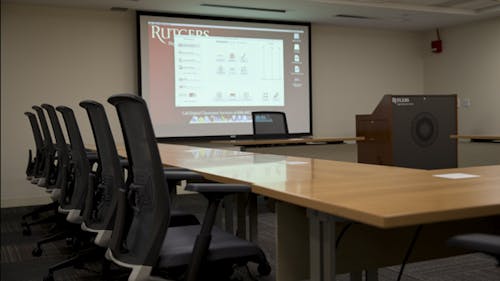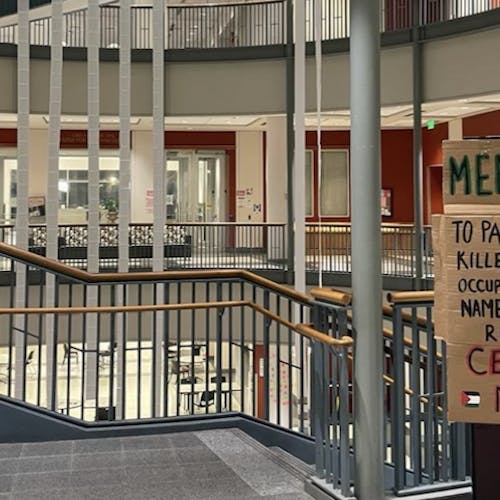Rutgers faculty explain technology on campus

Awake, but not wanting to get up, you lie there and check Scarletmail on your phone for any important messages. You have none, so you get ready for class and leave your room.
Realizing you forgot something in your room, you use your school ID to swipe access back into the building. Worried about being late for class, you check the Rutgers App to find out when the next bus will arrive.
The day has barely started, but you have already utilized various forms of technology, particularly the technology suited for life at Rutgers.
As a research institution in the 21st century, Rutgers is deeply entrenched in these types of advancements, relying on them to improve everyday lives as well as enhancing education.
Donald Smith, vice president of the Office of Information Technology, said Rutgers students send and receive 3 billion emails annually and spend 7 million person-hours annually on my.rutgers.edu portal selecting classes, viewing grades, reading emails or using other devices.
Along with faculty, students spend 9 million person-hours on Sakai annually, he said.
He mentioned a Confucius quote: “I hear and I forget, I see and I remember, I do and I understand,” Smith recited.
“That’s the essence of what active learning and participatory learning has to do,” he said, “We need to get to the point where we could do because that’s the point where we can understand.”
Smith said recording lectures is one way to passively use technology. While recording is better than not going to lecture, it is passive learning. Collaborative real-time interaction with faculty and other students is best.
Smith said one increasingly used strategy is called the “flipped classroom,” where the lecture-homework process is inverted. Instead of lecturing and assigning homework for the students, instructors record a lecture for the students to watch or listen to at home and work through problems during class.
“You come to class to participate in solving the problems,” Smith said. “How did you do this? Why did you do that? Why did it work? Why didn’t it work? So what was a typically more of a passive learning experience becomes active learning.”
Moreover, the University looks forward to increased technological possibilities for collaboration. There is going to be a transition to incorporate social media such as Twitter and Facebook and real-time mobile vocational-ware environments, such the ability to use your mobile phone to print wirelessly to the nearest printer he said.
Sharon Stoerger, director of the Information, Technology and Informatics program at Rutgers, approves of using social media as a vehicle for learning.
“It’s a way to connect with students by using tools that are comfortable to them,” she said.
Smith said Equipment Leasing Fund grants fund the advancements, as well as help from the new Strategic Plan that allows the University to identify weaknesses and develop world-class resources.
He said Rutgers needs to do better in relation to other institutions of higher education.
Still, Rutgers has collaborative spaces in Rutgers like Tillet Hall on Livingston campus, Newark Library and Camden Library. Smith said these are areas where groups of half a dozen students can sit around a table and share their work in innovative ways.
Matthew Wilk, associate director of Technical Services and Operations at Digital Classroom Services, said the new standard classroom podium — the Digital Classroom Podium — was originally conceived by the Classroom Committee.
“The DCP is a presentation portal that allows instructors to present using a Mac computer, a Blu-ray player, a document camera, or by connecting their own mobile devices,” Wilk said.
They deployed the podiums in the fall of 2012 in 27 classrooms as a pilot program. Since then, they have deployed many more podiums, tweaking them frequently through feedback from faculty.
Wilk said the DCS is in the midst of a project to standardize all classrooms with these podiums that offer new, all-digital, high-definition presentation.
Presently, 110 of DCS’s 251 classrooms have DCPs, with more installations planned for the upcoming year, he said.
Their program is now exploring methods to incorporate lecture capture capabilities to implement video conferencing.



